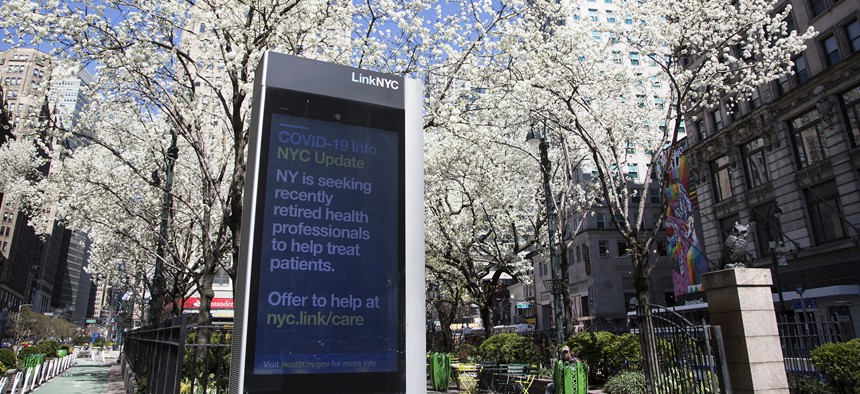NYC rips out last pay phones

Information on the coronavirus is seen in a LinkNYC ad on March 24, 2020 in New York City. GettyImages/ Corbis News / VIEW press / Contributor
The last public pay phone in New York City was removed as the city makes way for LinkNYC kiosks that offer free nationwide calling, Wi-Fi, charging ports, 911 access and more.
The last freestanding pay phone in New York City was pulled up and carted off to a museum this week.
The Big Apple’s pay phones have slowly been replaced by LinkNYC kiosks, multipurpose devices that provide free nationwide calling, Wi-Fi, charging ports, 911 access, maps, public service announcements and advertising.
Since 2015, the city has installed over 1,800 kiosks throughout the five boroughs, helping to accelerate high-speed broadband deployment. They have facilitated more than 3 billion Wi-Fi sessions, and over 10 million people have subscribed.
LinkNYC kiosks are made possible through a partnership between New York and CityBridge, a NYC-based consortium of technology, media, connectivity and user experience experts.
The newest kiosks will offer 5G to speed the rollout of the technology across the city. Link5G devices will be as tall as street poles and allow multiple mobile carriers to house equipment in each kiosk, improving nearby coverage for customers of several wireless companies. The new poles will have the kiosk’s display attached at street level and will still provide free Wi-Fi and digital calling, an emergency 911 button and USB chargers, along with maps, information on city services and display ads.
The last of the pay phones will be moved to the Museum of the City of New York for its “Analog City: NYC B.C. (Before Computers)” exhibit, the Gothamist reported.
"In less than a decade we've gone from pay phones on street corners to free Wi-Fi kiosks all over our city," New York City Council Member Julie Won said at an event marking the removal of the last pay phones from Times Square. "We're on the right track towards making NYC technologically equitable and we must continue this work to connect more New Yorkers to affordable high speed internet in their homes and schools."
NEXT STORY: Is it really technology that makes a city smart?






